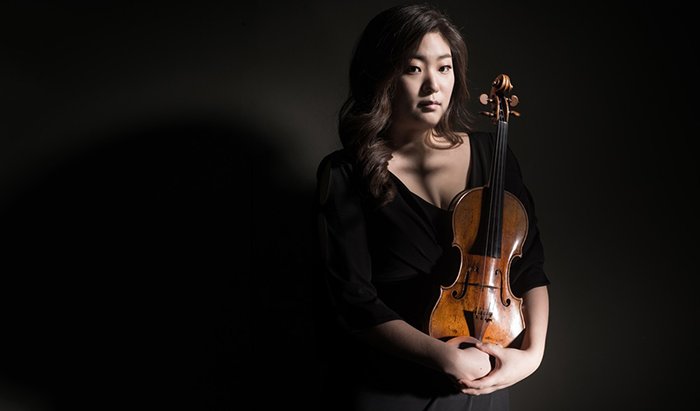

Program
Featuring
Other information
The event is about 2.5 hours long.
About the event
The Concertino series, featuring works for chamber orchestra, this time launches a musical expedition to the north. The departure point was Salzburg: on his return from his second trip to Italy, Mozart composed his Symphony No.15 here, and it was here that he wrote his Violin Concerto No. 5, with which he bid farewell to the genre at the age of just under twenty as he gradually explored and pushed the limits of the violin concerto’s scope and technique. Janáček’s Suite for String Orchestra from the composer’s early period will be performed in the Czech Republic. The final destination will be Norway, where the BFO, led by János Pilz, will bring Grieg’s two melodies based on folk songs. The soloist for the evening is Berlin Konzerthausorchester’s first concertmaster Suyoen Kim, who plays Mozart with “charm, a seductively warm tone and fluid melodies”, according to The Strad journalist.
Mozart struck a more serious note in his Symphony No. 15, which was composed when he was sixteen, than in his A major symphony written on his return from a tour of Italy in 1771. Although only two months elapsed between the two works, the Symphony in G major is in many ways more regular but more daring in its tempo treatment than its predecessor. The square theme of the odd-metered, opening movement is followed by a sharply-contrasting quiet but rich slow movement, with its string sonorities tinged with oboe and horn. After a minuet of an almost harsh main section and a singing trio, a bright and cheerful rondo concludes the work.
His violin concerto in A major was composed in 1775 as a summary of everything to know about the genre. Here the solo instrument behaves like a little diva: after the orchestral overture of the first movement, it reluctantly starts the main theme but only following a lyrical aria. The melody consisting of triads emerges in all three movements. The exceptionally accomplished, luscious second movement is followed in conclusion by a rondo with Turkish-like––though to the Hungarian ear, mostly Hungarian-sounding––phrases.
Janáček’s Suite for String Orchestra is light, balanced, charming, sincere, and sometimes ironic music. The instrumentation is very contrasting: in one movement the violins carry the melody, in another the low strings. The composer intended to write his 1877 work on the model of a baroque suite but the movements were so far removed from the dance types that he eventually abandoned the baroque titles. The six movements include powerful, translucent, bucolic, Beethovenian, meditative, and melancholically-heroic music.
Known for his musical miniatures rather than large-scale forms, Grieg’s oeuvre includes a wealth of folk melodies. The titles of the Two Nordic Melodies also suggest a folk inspiration. In “Folk Style” Grieg evokes the icy, bleak, stagnant world of peasant life. The slow movement, led by the cello, though harboring warm harmonies, never quite escapes its sweet sorrow. Shorter and simple in structure, “Cow Calling and Peasant Dance” is a pairing of a moderately paced melody and a lively dance.
Did you know? Mozart’s Symphony No. 15 was composed in 1772, and his Violin Concerto No. 5 in 1775; Janáček’s Suite premiered in Brno on December 2, 1877, with the composer conducting; Grieg composed his Two Nordic Melodies in 1895; the Festival Orchestra most recently performed Mozart’s violin concerto on April 12, 2022 (soloist: Ilya Gringolts, conductor: Gábor Takács-Nagy); this will be the BFO’s first performance of the other pieces.
Contemporary events: the opera Lucio Silla, by Wolfgang Amadeus Mozart, premiered in Milan on December 26, 1772 / the Scottish physician, chemist and botanist Daniel Rutherford isolated nitrogen in 1772 / the first Hungarian translation, by Ádám Teleki, of the drama Le Cid, by Pierre Corneille, was published in 1772 / the Russian empress Catherine II issued an order liquidating the Sich, the semi-autonomous state formation of the Zaporozhian Cossacks, in 1775 / the piece Variations on a Rococo Theme, by the Russian composer Pyotr Ilyich Tchaikovsky, premiered in Moscow on November 30, 1877, with Wilhelm Fitzenhagen as the soloist and Nikolai Rubinstein conducting / the Russian author Leo Tolstoy completed the publication of his novel Anna Karenina in the periodical Russkiy Vestnik in 1877 / Hungary introduced mandatory state birth records in 1895 / the Norwegian painter Edvard Munch painted his Madonna in 1895 / the novel The Time Machine, by the English author H. G. Wells, was published in 1895 / the Austrians Josef Breuer and Sigmund Freud published their work Studies on Hysteria in 1895